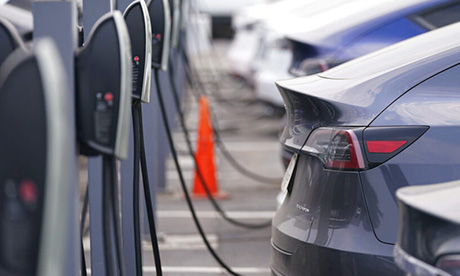One autumn evening four years ago, Ivan Bender, a Hualapai man in his mid-50s, took a walk with his fluffy brown-and-white Pomeranian, Sierra Mae, to check on the ranchland he tends.
Nestled in western Arizona’s Big Sandy River Valley, the ranch protects Ha’ Kamwe’ — hot springs that are sacred to the Hualapai and known today in English as Cofer Hot Springs.
As the shadows lengthened, Bender saw something surprising — men working on a nearby hillside.
“I asked them what they were doing,” Bender recalled.
“They told me they were drilling.”
As it turns out, along with sacred places including the hot springs, ceremony sites and ancestral burials, the valley also holds an enormous lithium deposit.
Now, exploratory work by Australian company Hawkstone Mining threatens those places, and with them, the religious practices of the Hualapai and other Indigenous nations.
But this threat is nothing new: Centuries of land expropriation, combined with federal court rulings denying protection to sacred sites, have long devastated Indigenous religious freedom.
Cholla Canyon Ranch, where Bender is the caretaker, includes approximately 360 acres about halfway between Phoenix and Las Vegas, flanked to the west by the lush riparian corridor of Big Sandy River.
The valley is part of an ancient salt route connecting tribes from as far north as central Utah to communities in Baja California and along the Pacific Coast, documented in the songs and oral traditions of many Indigenous nations.
“There are stories about that land and what it represents to the Hualapai Tribe,” Bender said.
“To me, it holds a really, really sacred valley of life in general.”
According to tribal council member Richard Powskey, who directs the Hualapai Natural Resources Department, the Hualapai harvest native plant materials along the river corridor for everything from cradle boards to drums.
The mining company (USA Lithium Ltd., which has since been acquired by Hawkstone Mining Ltd.) hadn’t told the Hualapai Tribe it was searching for lithium on nearby Bureau of Land Management lands.
That evening, Bender was shocked to see the destruction taking place.
The company eventually bulldozed a network of roads, drilling nearly 50 test wells more than 300 feet deep in the sacred landscape.
This summer, Hawkstone plans to triple its exploratory drilling, almost encircling Canyon Ranch and the springs it protects.
In the next few years, Hawkstone hopes to break ground on an open-pit mine and dig an underground slurry to pipe the ore about 50 miles to a plant in Kingman, Arizona, where it will use sulfuric acid to extract the lithium. Lithium, which is listed as a critical mineral, is crucial for reaching the Biden administration’s goal of replacing gas-guzzling vehicles with electric vehicles, and Big Sandy Valley is relatively close to the Tesla factory in Nevada. Altogether, Hawkstone has mining rights on more than 5,000 acres of public land in Arizona for this project. Yet tribes whose sacred sites are at risk have almost no say in their decisions.
Public lands from Bears Ears to Oak Flat contain countless areas of cultural and religious importance.
But when tribes have gone to court to protect these sites — and their own religious freedom — they’ve consistently lost.
Courts have narrowly interpreted what counts as a religious burden for tribes, largely to preserve the federal government’s ability to use public lands as it sees fit. Continue reading
- Maya L. Kapoor is a writer and editor based in Lotus, California. She was formerly an associate editor at High Country News.
